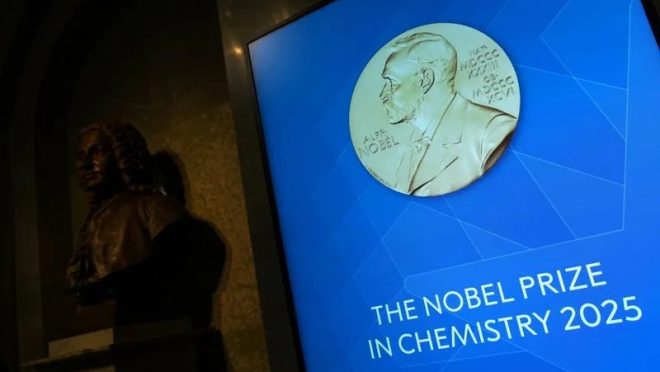Capturing carbon and cleaning water: The Nobel-winning breakthrough explained
Capturing carbon and cleaning water: The Nobel-winning breakthrough explained

The pressing issues of the world today vary widely, from climate change to continuing pollution; there seems to be no end in sight for humanity’s ever-expanding carnage. The toxins in our water supply, the carbon in our atmosphere, the cancerous dust in our air, all are a part of a complex ecosystem of constantly echoing murderers who have kept us hostage.
Wouldn’t it be nice if we could just capture the chemicals from the environment and throw them away just like any other trash? Well, the Nobel Prize winners of 2025, Susumu Kitagawa, Richard Robson, and Omar Yaghi, have made a significant stride in that step. They have designed an organic trash bag; much like any other bag, it contains the waste, removes it from the environment, and safeguards it until further processing.
Their inventions are called metal–organic frameworks (MOFs). By varying the building blocks used in the MOFs, chemists can design them to capture and store specific substances. MOFs can also drive chemical reactions or conduct electricity.
The potential for change
Humanity’s greatest strength is to innovate, and thanks to the Industrial Revolution, the technologies and the comfort it brought made us jump to a standard of life not even imaginable two centuries ago. Never before had we seen such tremendous progress in the human timeline.
However, this came at a cost. The constant need for innovation and the market’s demand for more convenience have led to the degradation of our environment. The rise of microplastics, the pollution caused by factory emissions, and even the fertilisers supporting our food supply are now immensely contaminated by so-called forever chemicals (inorganic matter that is not degradable), leading to a rise in various health issues and a multitude of complications in our way of living.
Here lies the significance of the laureates’ invention. There have been efforts to purify the environment and get rid of such toxins, but none may have been so close and effective in doing so as the winners.
The trio’s organic architecture can be used to absorb and capture these toxins within a crystalline metal organic framework. This means, in theory and in practice, they have found a jail where excess carbon can be fetched from the atmosphere, heavy metals present in our water supply can be extracted, and even the toxins present in our air in molecular form can be absorbed.
According to Olof Ramström, a member of the Nobel Committee for Chemistry, the invention works like Hermione’s famous beaded handbag from Harry Potter, meaning it may look small in appearance, but it could hold enormous amounts of luggage if you just keep storing inside.
The molecular framework is small in structure but has a multitude of cavities that store the undesirable toxins. Therefore, it compares to the never-ending, spacious handbag from Harry Potter.
The impact
MOFs’ impact is widespread. From solving clean water problems to capturing carbon, the storage capacity and adaptability of the framework are the roots of its effectiveness. For instance, even complex molecular toxins such as perfluoroalkyl and polyfluoroalkyl substances, or PFAS, which have been present in our environment for decades, can be captured in MOFs.
Over 100,000 unique MOF structures have been created to date, each with unique features tailored to a particular use case. Some, like the ones developed by Yaghi, are able to extract carbon dioxide from industrial or power plant flue gases. In order to power natural gas vehicles, others are employed to pack methane into fuel tanks. Others have the ability to store hydrogen and might eventually be used in cars that run on hydrogen.
The need for such innovation can never be understated, and as humanity progresses, the residuals of its development must also be addressed with proper precision and commitment; otherwise, the very existence of humanity can be threatened just as today.


